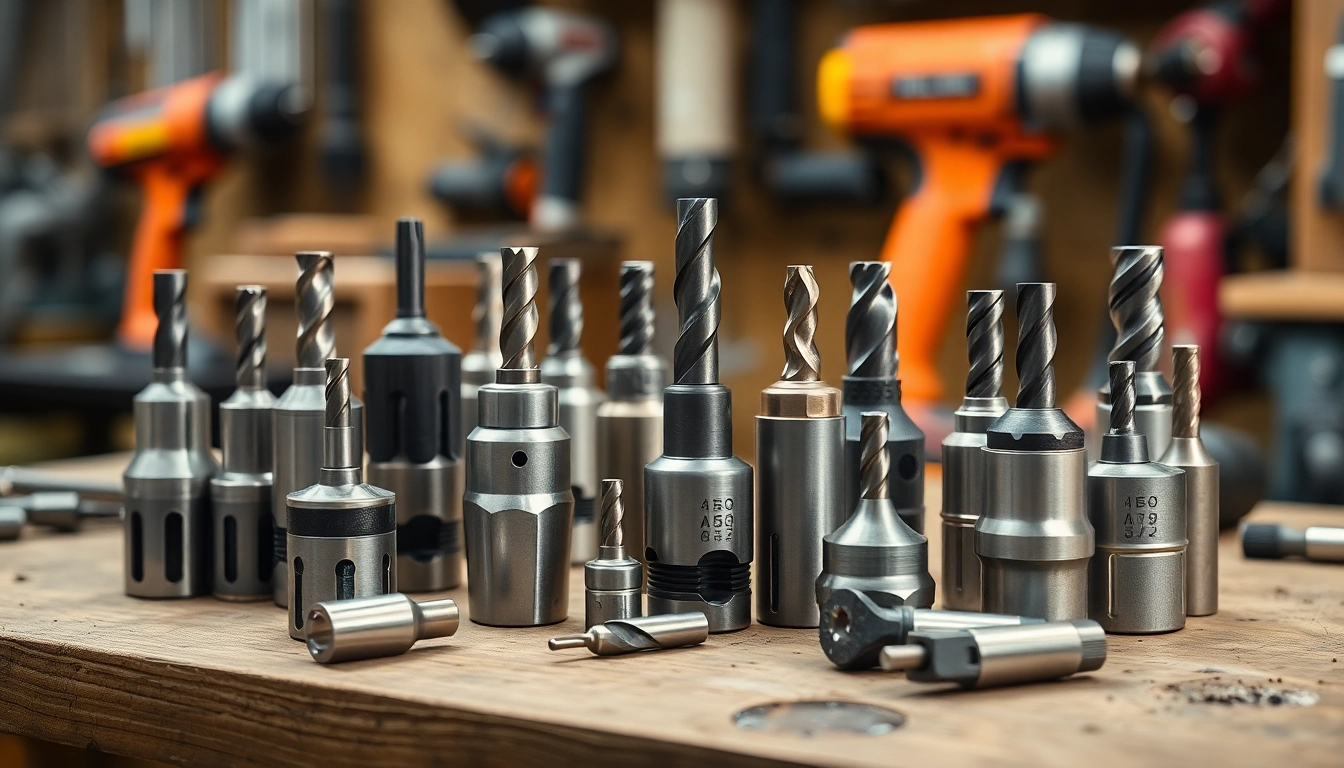Understanding Drill Chucks
What is a Drill Chuck?
A drill chuck is a specialized mechanical device that allows you to securely hold drill bits in place while operating a power drill. This crucial component is responsible for transferring the rotating motion from the drill’s motor to the drill bit, enabling effective drilling into various materials. The design of a drill chuck varies depending on its type, and its main objective is to provide a tight grip on the bit, minimizing slippage and ensuring consistent performance.
Types of Drill Chucks
Drill chucks come in several variations, each designed to suit different applications. Understanding the types can help you select the right one for your needs:
- Keyed Chucks: These chucks require a key to tighten and loosen the grip on the bit. They are known for providing a secure hold and are preferred for heavy-duty applications.
- Keyless Chucks: This type eliminates the need for a key, allowing users to easily tighten or loosen the chuck by hand. Keyless chucks are popular for convenience and speed, especially in light-duty work.
- Hybrid Chucks: Combining features of both keyed and keyless chucks, hybrid designs offer flexibility and ease of use for different drilling tasks.
- Collet Chucks: These are designed to hold specific sizes of drill bits and are often used in precision drilling applications. Collet chucks provide excellent concentricity and are popular in CNC machines.
Key Features to Consider
When choosing a drill chuck, several features should be taken into account:
- Grip Range: The grip range indicates the sizes of drill bits that the chuck can accommodate. Ensure the chuck’s range matches your drilling bits.
- Material: Chucks made from hardened steel or materials with high tensile strength will offer better durability and resistance to wear.
- Design and Construction: The construction quality impacts the chuck’s stability, precision, and alignment during operation.
- Compatibility: Ensure that the chuck size and taper type match your power tool’s specifications for seamless integration.
Selecting the Right Drill Chuck for Your Needs
Assessing Compatibility with Power Tools
Compatibility is a critical factor when selecting a drill chuck. Before purchasing, verify the specifications of your power tool to ensure the chuck will fit properly. Drill chucks typically come in standard sizes (like 3/8 inch and 1/2 inch) and different mount types, such as Jacob’s taper or Morse taper, and it is essential to match these accurately.
Evaluating Chuck Size and Type
Choosing the right chuck size impacts drilling efficiency and precision. Keyless chucks are advantageous for quick changes, especially in applications that require frequent bit replacements. For heavy-duty drilling tasks, a keyed chuck may provide more stability. Moreover, if your tasks require a variety of bit sizes, a chuck with a wider grip range would be beneficial.
Price vs. Quality: Finding the Balance
Budget is always a concern for most DIY enthusiasts and professionals alike. However, opting for the cheapest option often results in compromises regarding performance and durability. Invest in a high-quality chuck from reputable manufacturers; it ensures smoother operation, longer lifespan, and ultimately better drilling results. Research brands, read user reviews, and whenever possible, test the chuck before purchase to guarantee that you are making a wise investment.
Installation and Maintenance of Drill Chucks
Step-by-Step Installation Guide
Installing a drill chuck can vary based on its type. Here’s a general step-by-step guide:
- Disconnect your power tool: Ensure safety by disconnecting any power sources to prevent accidental activation.
- Remove the old chuck: Use a chuck key (if applicable) to rotate the chuck counterclockwise until it loosens. If it’s stuck, you may require wrenches or other tools.
- Prepare for installation: Clean the spindle and the new chuck to remove any debris or dust that may hinder the new installation.
- Install the new chuck: Position it on the spindle and tighten it by rotating it clockwise. Ensure it is secured firmly.
- Test the installation: Insert a drill bit into the chuck and tighten it according to the chuck type. Ensure the bit is held secure before reconnecting power.
Regular Maintenance Practices
To prolong the life of your drill chuck and optimize performance, perform regular maintenance:
- Cleaning: Regularly clean the chuck to prevent dust and debris from affecting its functionality.
- Lubrication: Apply lubrication to moving parts based on manufacturer guidelines to ensure smooth operation.
- Inspection: Periodically inspect for signs of wear and damage, replace any worn or damaged components quickly.
Troubleshooting Common Issues
Problems like slippage, stuck bits, or unusual wear may arise. Here’s how to address common issues:
- Slippage: Ensure that the chuck is properly tightened and the drill bit is the correct size for the chuck.
- Stuck Bits: If a bit gets stuck, reverse the drill and gently pull while pushing the button. Avoid excessive force that could damage the chuck.
- Wear and Tear: If you notice uneven wear, it may be time to replace the chuck entirely.
Benefits of Using High-Quality Drill Chucks
Increased Precision and Reduced Slippage
The primary benefit of using a high-quality drill chuck is the increased precision it provides. A well-manufactured chuck grips bits securely, reducing the chances of slippage during operation. This precision is crucial, especially when working with materials that require exact drilling depths and diameters.
Durability and Longevity of Drill Chucks
High-quality materials and construction contribute to the longevity of drill chucks. Cheaper alternatives tend to wear down quickly, resulting in more frequent replacements. Investing in a durable drill chuck not only saves money in the long run but also ensures consistency in your work quality.
Impact on Overall Tool Performance
The performance of your power tool is directly influenced by the quality of the chuck. A robust, precision chuck enhances the overall efficacy of the drill, allowing it to perform tasks more efficiently and smoothly. This improvement is particularly noticeable in jobs that require high power and intricate control, such as woodworking or metalwork.
Where to Buy Reliable Drill Chucks
Online Retailers vs. Local Hardware Stores
Both online retailers and local hardware stores have their advantages and drawbacks. Online marketplaces, such as Amazon and specialized tool supply websites, often have wider selections and competitive prices, but they lack the immediate availability and personal service found in local stores. When considering where to purchase, evaluate factors such as convenience, quality assurance, and the return policy before deciding.
What to Look for in a Vendor
When choosing a vendor for your drill chuck, several factors should be prioritized:
- Reputation: Look for vendors with positive reviews and a strong reputation for quality and customer service.
- Warranty Policies: Ensure that the vendor offers a warranty or guarantee for their products, as this reflects their confidence in the quality.
- Return Policy: A flexible return policy can be a comfort when trying out a new chuck, allowing you to ensure compatibility and functionality.
Customer Reviews and Recommendations
Customer feedback can be invaluable in selecting the right drill chuck. Online reviews and recommendations from experienced users provide insights into real-world performance and durability. Look for feedback not just on the product itself, but also on customer service experiences with the vendor.



